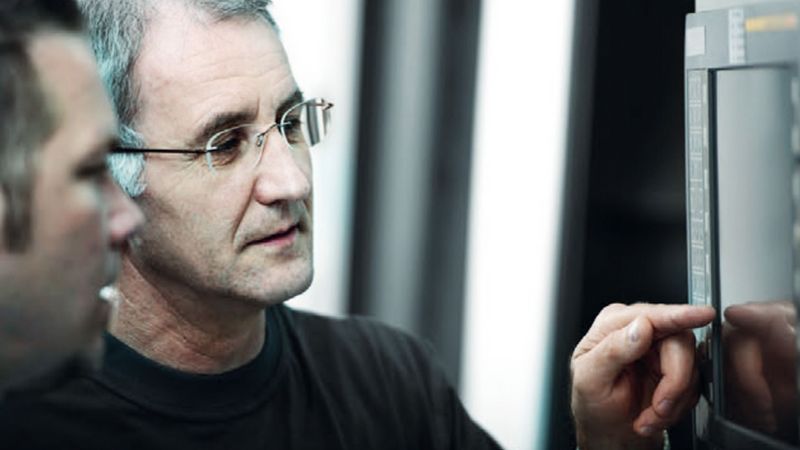Why Intuitive CNC Programming Interfaces are so Important
How can machine tool operators ensure the smooth transfer of their hard-earned CNC programming knowledge to new or young operators? How can programming know-how, typically acquired over many years, be easily passed on to new employees? It is one of the biggest challenges facing the industry. One possible solution: intuitive CNC programming interfaces. Because: The easy-to-operate human-machine interface, or HMI for short, comes with the technical expertise already built-in.
HMIs are critical for CNC programming, diagnostics, debugging, and machine changeovers. We would like to highlight two advantages in particular:
- Training new employees in the programming and monitoring of complicated machines are both made significantly easier and more efficient through intuitive human-machine interfaces. This also frees up the precious resources of specialists and helps alleviate the shortage of highly skilled workers.
- Modern HMIs provide a better overview of production systems and promote operational streamlining and machine optimizations. This becomes even more important as more machine sensors are integrated into a network that provides real-time information about the operation and the machine.
The HMI itself is only a device. Its functionality relies on the operating system and related software. In an optimized state, an HMI offers:
- Easier combination of processes. This can dramatically shorten the cycle and changeover times.
- The prevention of the need for reworking. The operator can perform simulations to avoid problems that may occur during part production.
- System integration. The collection of machine data is playing ever-increasing real-time monitoring, as is the desire to connect to ERPs and other digital infrastructures.
Most first-generation HMIs employed in CNC programming and machine tools were complex and designed for highly trained operators. Many potential sources of error lurked for inexperienced operators. In the past, machine operators worked for years on the same machine and developed deep specialist knowledge of the characteristics of the processes. Today's operators typically work on multiple machines, meaning they often have less depth of familiarity with programming and technical expertise.
The physical designs of these HMIs are still equipped with “traditional” buttons and PC functionality such as mouse and keyboard. In addition, many HMIs are brand specific, so operators may need to learn several different systems to monitor a production cell.
From Interface to Interaction
The new generation of HMIs for CNC programming must first and foremost be one thing: Easy to use and capable of drawing the best performance out of machining technology. How do we seek to achieve this at UNITED GRINDING? By improving the interaction between the operator and the HMI. This starts with valuable feedback from our customers. By asking about the challenges they've faced and acknowledging their wishes and needs, our research and development team can develop and bring to market even more powerful and effective machine tools and supporting software.
A number of features of modern HMI design make machine tools more user-friendly:
Multi-touch screen capabilities
- Touching an icon
- Simulate or direct an action
- Swipe through steps and displays
Portability
- through tablets and smartphones
Personalization
- The operating system recognizes the operator and their level of knowledge and presents a tailored selection of appropriate HMI parameters based on their work
- Presets can be saved individually for each user
Other benefits of the new generation of HMIs?
- Real-time notifications: For example, warnings that inform operators when a machine is running low on parts or when it needs maintenance
- More brand-independent and consistent human-machine interfaces
With increasing digitization and automation in production, more and more sensors are being connected to the machines and networked. As a result, HMIs are poised to expand to voice recognition, eye and gesture tracking, and motion sensors. Algorithms will soon help you determine which machine is best suited for which production run.











